Porsche Boxster 987 – The Story
An evolution of the original 986 Boxster
987 Story / 987 Timeline / 987 Model Guides / MY Differences / Image Gallery / Specs / Misc Data / FAQs / News
Type: 987 (987.1, 987.2)
Generation: Second Generation
Manufacturer: Porsche AG
Production Years: 2004 - 2012
Model Years: 2005 - 2012
Body Style: 2-Door Roaster
Layout: Rear mid-engine, rear-wheel-drive layout
Engines: 2.7 L M96.25
M97.20 flat-6 (2005–2008), 2.9 L M96.26/MA1.20 flat-6 (2009–2012), 3.2 L M96.26 flat-6 (2005–2006), 3.4 L M97.21/M97.22/MA1.21/MA1.22 flat-6 (2007–2012)
Transmission: 5-speed automatic, 5-speed manual, 6-speed manual, 7-speed PDK
Official Photos: September 7, 2004
Premiere: September 23, 2004 at Mondial de l'Automobile Paris motor show press day
Market Launch: November 27, 2004
The second generation Porsche Boxster came out in 2004 at the Geneva Motor Show and shared almost the same design with the first version of the car. It also shared a lot of components with its 997 generation 911 sibling which was released the same year. The second generation Boxster was known as the 987. Design wise, the second generation Boxster had distinctive front styling with different triangular headlights and a unique front fascia. The front air intakes got redesigned, as well as the rear bumper and stoplights. The wheel arches got bigger to allow the installment of bigger rims, while the interior got a more prominent circular theme.
The interior still pointed to the racing heritage with the presence of a tachometer which was the main dial in the instrument panel and the ignition switch was placed on the left side of the steering wheel. The leather upholstery was standard and the trims could be ordered with a choice of materials such as wood, aluminum or wood. The additions list included a Bose sound system, bi-xenon headlights and a navigation system. Higher-strength steel in the cowl area and improved spot-welding and adhesive bonding techniques resulted in a body shell that was four percent more torsionally rigid than the 986 Boxster and 14 percent stiffer.
The 987 Boxster's base 2.7-liter engine and 3.2 Boxster S were largely carried over from the late 986, but a 12 lb weight savings was realized by eliminating the cast-iron bearing girdle inserts. During the 2006 model year, Porsche incorporated a larger ball bearing for the support of the intermediate shaft at the flywheel end, which mostly mitigated the infamous intermediate shaft (IMS) bearing issues that plagued the M96 series.
The 2007 Boxster received engine updates to match those of its hardtop Cayman stablemate. This consisted of the VarioCam Plus two-stage intake valve lift to both the base and S versions. The base five-speed manual was no longer Audi-based but made by Japanese supplier Aisin; the Boxster S six-speed retained the Getrag unit. Both the manual transaxles and the five-speed Tiptronic S featured shorter final box-mounted flywheel drive ratios to compensate for the larger-diameter wheels featured across the 987 range (17-inch wheels were standard on the base Boxster, 18-inch rollers were standard on the S, and 19-inch alloys were optional). The 987's suspension was mostly unchanged from the 986. However, many detail improvements were made, such as stiffer and lighter castings for the aluminum uprights/wheel carriers and larger wheel bearings with embedded magnets, which replaced the separate tone rings for the ABS wheel speed sensors. The 987 also featured variable-ratio steering for its hydraulically-assisted rack and pinion gear. Porsche's Porsche Stability Management (PSM) system was now standard across the 987 range and offered more precise controls, which allowed the driver greater freedom before PSM intervention.
Porsche introduced the face-lifted 987 for the 2009 model year. The updated Boxster featured a family of all-new engines with new designation. It had a much more rigid two-piece rankcase/block assembly made entirely of silicon-impregnated aluminum alloy, which was much more rigid than the previous M96 and M97 engines and dispensed with the separate crankshaft main bearing girdle. The cylinders were reinforced and were a closed-deck design to minimize cylinder distortion; this was important as the crankcase/block configuration was to form the basis of all future turbocharged engines, as well as the street and racing versions of the high-revving GT3. Porsche engineers had gained enough confidence in contemporary timing chain technology to eliminate the separate intermediate shaft of previous flat-six engines and drive the camshafts directly via a pair of long chains and generous supporting ramps. The oil pump was driven via a separate chain. The pump itself was demand-controlled by the DME control unit to supply only the necessary amount of oil for the engine running conditions, which saved energy.
The other big news for the engine series was direct fuel injection (DFI) for the 3.4-liter S versions of the 987.2 and for all 997.2s; the base model 2.9-liter 987.2 had port fuel injection. The other major change for the 987.2 was the replacement of the optional torque converter-equipped Tiptronic automatic transaxle with a dual-clutch automated transaxle that Porsche dubbed PDK. Still, in short, the quick-shifting PDK quickly became the transmission of choice for most buyers, eventually achieving a nearly 90 percent take rate among buyers of Porsche sports cars.
This graphic breaks out the second generation Porsche Boxster in terms of timelines and how to tell all the models apart. Click on the image to see it in higher definition. The initial range was known as the Boxster 987.1 and ran from 2005 through 2008 model years. There was an engine update in 2006 for both the base and S Boxster, but they were still considered 987.1s. The 2009 model year refresh was considered the 987.2 update. Several special editions also existed and are shown.
First year of the 987 generation.
Base Boxster: 2.7L flat-six with 240 hp.
Boxster S: 3.2L flat-six with 280 hp.
New chassis and bodywork, larger and stiffer than 986.
Upgraded interior design and materials (borrowed from 997 911).
New 17"/18" wheel options, revised suspension geometry.
Hydraulic power steering.
Tiptronic S 5-speed automatic available; 5-speed and 6-speed manuals.
No major mechanical changes.
Optional PASM (Porsche Active Suspension Management) introduced.
Sport Chrono Package becomes available for sharper throttle and stability control tuning.
Slight software tweaks for improved throttle response.
Engine upgrades:
Base Boxster power increased to 245 hp (still 2.7L).
Boxster S upgraded to a 3.4L flat-six with 295 hp.
Revised gear ratios in manuals for improved acceleration.
Optional bi-xenon headlights added to option list.
Minor interior refinements (trim and navigation system improvements).
Final year of the 987.1.
No major mechanical changes.
Some optional equipment packages revised or bundled.
Bluetooth prep and auxiliary input introduced in select markets.
Generally considered the most refined of the 987.1 cars.
New DFI (Direct Fuel Injection) engines:
Base Boxster now 2.9L with 255 hp.
Boxster S remains 3.4L but with DFI and 310 hp.
IMS bearing issue eliminated with new engine architecture.
Introduction of 7-speed PDK dual-clutch transmission (replaces Tiptronic).
Revised styling: new front/rear bumpers, LED daytime running lights, new taillights.
Interior updates: optional PCM 3.0 infotainment system with touchscreen.
Launch of limited edition Boxster RS60 Spyder based on Boxster S.
Minimal changes.
Updates to options: universal audio interface becomes more widely available.
Continued mechanical and cosmetic improvements from 2009 carry over.
Spyder variant introduced late in the year (for 2011 model year in most regions).
Introduction of the Boxster Spyder, a lightweight, minimalist, enthusiast-focused model:
3.4L engine with 320 hp, 176 lbs lighter than Boxster S.
Manual soft top, no radio or A/C by default.
Unique styling cues (double-bubble rear deck).
Standard Boxster and Boxster S unchanged aside from trim and option updates.
Largely a carryover year.
Final production year before launch of all-new 981.
Used market sees increased demand for late-model 987.2 cars due to reliability and modern features
These cars were slightly faster and more performance focused than the first generation Boxster, but saw improvements made over the years.
The second-generation Porsche Boxster (987), introduced in 2005, featured a more sculpted and upscale design with wider fenders, sharper lines, and rounder headlights that echoed the 997 911, giving it a more modern and muscular stance. Inside, it marked a significant upgrade in quality and ergonomics, with a refined dashboard layout, better materials, and a more premium feel throughout.
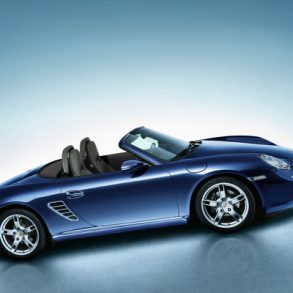
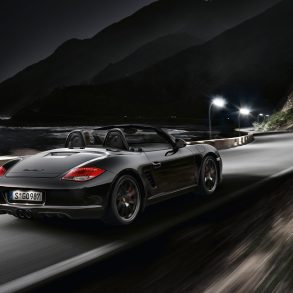
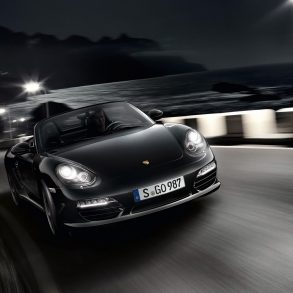
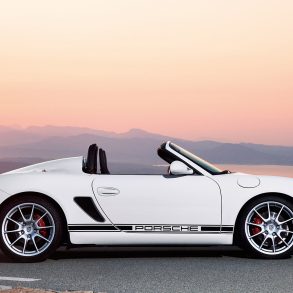
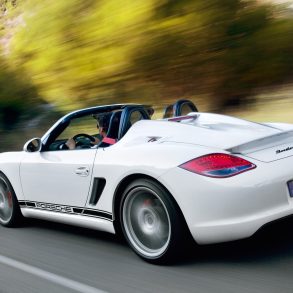
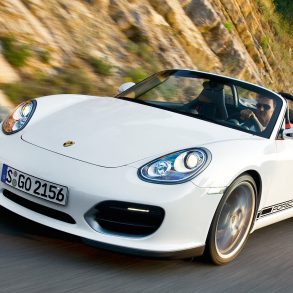
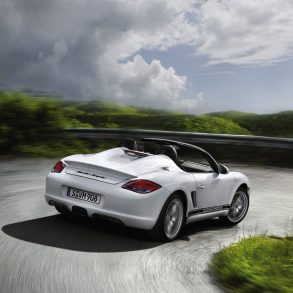
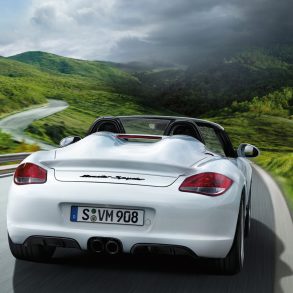
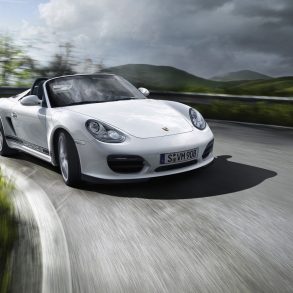
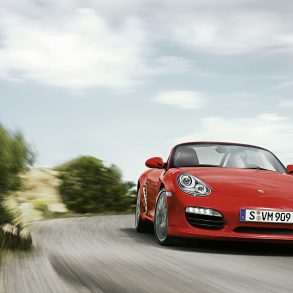
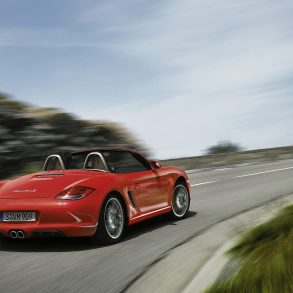
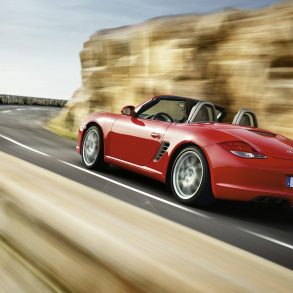
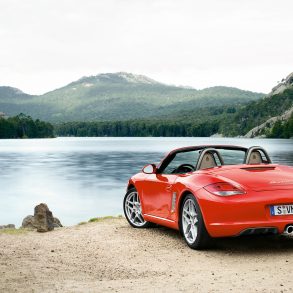
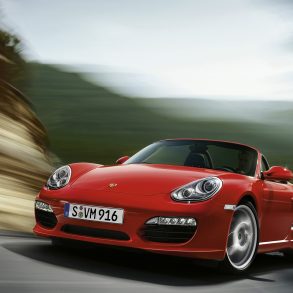
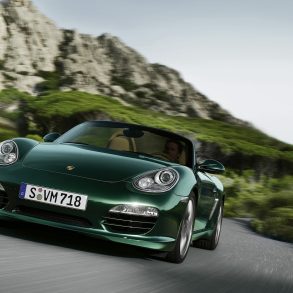
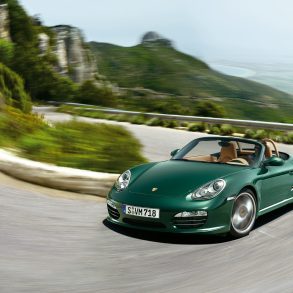
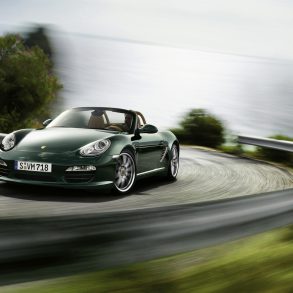
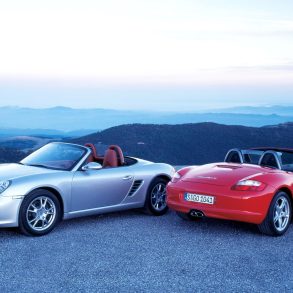
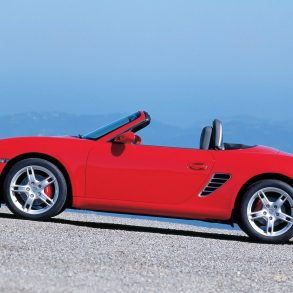
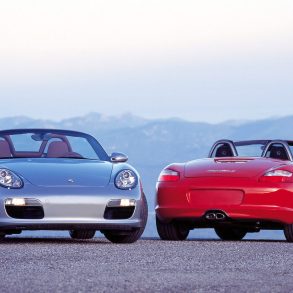
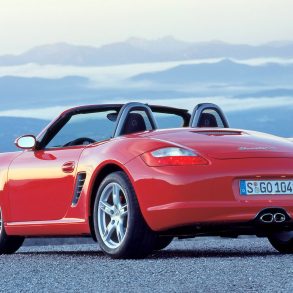
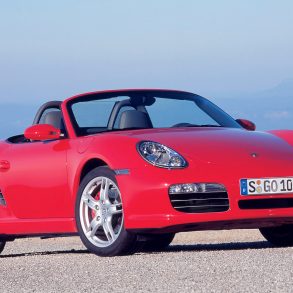
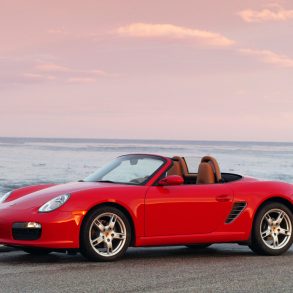
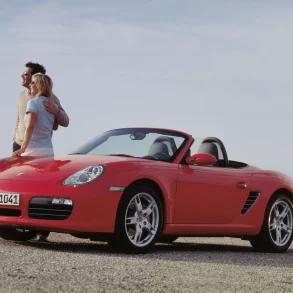
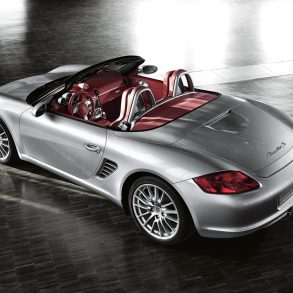
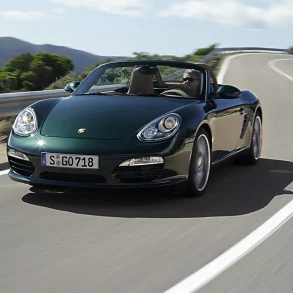
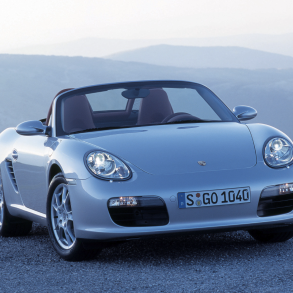
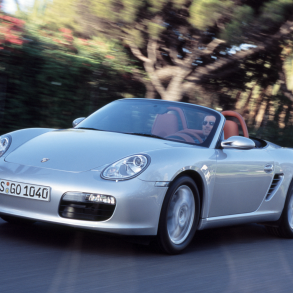
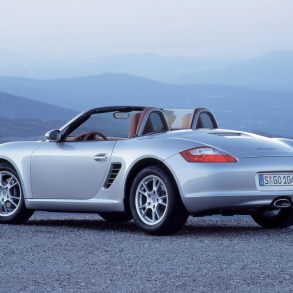
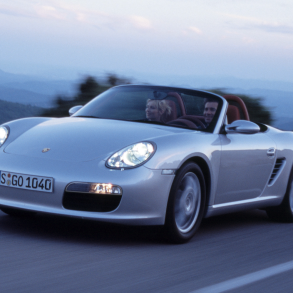
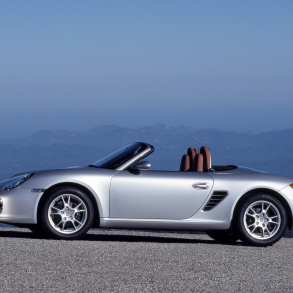
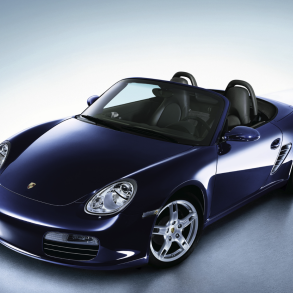
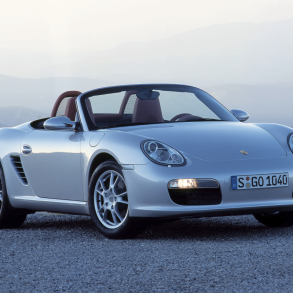
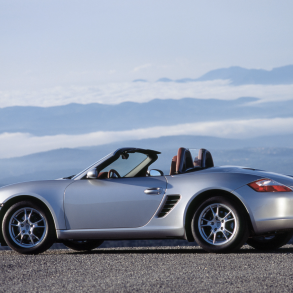
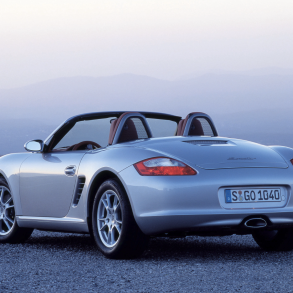
The Porsche Boxster was a revelation when it was first released, but the updates in the second generation made it a more complete package as a sports car. The video reviews when the second generation came out support this statement.
We dig into some of the data surrounding the second generation Porsche Boxster, including production numbers, specifications, chassis numbers, sales brochures, equipment codes, maintenance schedules, common problems, colors and much more.
The second-generation Porsche Boxster (987) was designed under the direction of Harm Lagaay, who was the head of Porsche’s design department at the time, with much of the actual design work led by Pinky Lai, the same designer credited with the 996-generation 911. The 987’s styling built upon the success of the original 986 Boxster but evolved to align more closely with the newly launched 997-generation 911, offering a more cohesive and premium look across Porsche’s lineup.
The second-generation Porsche Boxster (987) was produced from 2005 to 2012, and it is typically divided into two phases. Together, the 987 models represented a major leap in both performance and quality over the 986 generation, while maintaining the core character of the mid-engine Boxster formula.
987.1 (2005–2008): This was the initial launch version, featuring a more refined design and updated engines (2.7L and 3.2L, later 3.4L for the Boxster S).
987.2 (2009–2012): This was the mid-cycle refresh that brought significant mechanical upgrades, most notably direct fuel injection (DFI) engines (2.9L and 3.4L), the introduction of the 7-speed PDK dual-clutch transmission, and revised styling elements like new front/rear bumpers and LED lighting.
The second-generation Porsche Boxster (987), produced from 2005 to 2012, offers a range of prices in the current market, depending on the specific model, year, condition, mileage, and features. Here's a breakdown:
Base Model: Prices typically range from $19,000 to $22,000, with variations based on mileage and condition.
Boxster S (Manual): The average market price is around $24,780, with examples ranging from $10,200 (for higher-mileage or less pristine units) up to $60,000 for rare or limited editions.
Base Model: Prices generally fall between $23,000 and $25,000, depending on factors like mileage and condition.
Boxster S (Manual): These models average around $31,480, with prices ranging from $25,000 to $35,000, influenced by factors such as mileage, condition, and specific features.
It's worth noting that the 987.2 models, introduced in 2009, feature significant mechanical upgrades over the 987.1, including direct fuel injection (DFI) engines and the option for a 7-speed PDK dual-clutch transmission. These enhancements contribute to their higher market values.
The difference between the first-generation Porsche Boxster (986) and the second-generation Boxster (987) is both substantial and evolutionary—Porsche refined nearly every aspect of the car for the 987 while preserving the core mid-engine roadster formula. In short, the 986 is more of a raw, analog sports car, beloved for its simplicity and lightweight feel, while the 987 is more refined, powerful, and livable, representing Porsche’s transition into the modern sports car era.
Visually, the 987 Boxster introduced in 2005 featured a more modern and muscular appearance. The body was slightly larger, with sharper lines, revised headlamps, and rounder taillights replacing the "fried egg" headlights of the 986. While the 986 shared some design elements with the 996 911, the 987 looked more distinct and upscale, with broader hips and a more cohesive aesthetic.
The interior quality took a significant leap in the 987. Porsche addressed criticism of the 986’s somewhat plasticky cabin by upgrading to higher-grade materials, a more sophisticated center console, metal trim accents, and optional features like PASM (Porsche Active Suspension Management). The ergonomics and overall build felt much closer to that of the contemporary 997-generation 911.
While both generations shared the flat-six engine architecture, the 987 came with updated engines and more power. Initially, the 987 Boxster had a 2.7L flat-six (240 hp) and the Boxster S had a 3.2L (280 hp)—later increasing to 2.9L and 3.4L DFI (Direct Fuel Injection) engines in the 2009 refresh (known as the 987.2), which also eliminated the troublesome intermediate shaft (IMS) bearing issue that plagued the 986 and early 987 cars.
Though both cars used a similar mid-engine platform, the 987 featured a stiffer chassis, improved suspension tuning, and better handling balance. Porsche also offered active suspension (PASM) and optional Sport Chrono for sharper performance.
The 987 introduced a more modern tech suite—better infotainment, optional navigation, improved climate control, and more robust safety systems. The facelifted 987.2 models even added PDK dual-clutch transmission in place of the older Tiptronic automatic.
The transition from the second-generation Porsche Boxster (987) to the third-generation (981) marked a major leap forward in both design and engineering. While the 987 refined the original Boxster formula, the 981—launched in 2012—completely modernized it, both visually and dynamically.
The 987 (2005–2012) was an evolution of the 986, maintaining a similar silhouette but with more aggressive styling, better build quality, and important technical upgrades in the 987.2 (like direct fuel injection and the PDK dual-clutch gearbox). It was still compact, analog in feel, and relatively understated in its proportions.
In contrast, the 981 Boxster (2012–2016) introduced a new, larger platform and a totally redesigned body, with styling cues taken from the 991-generation 911 and Porsche’s mid-engine supercar concept heritage. It featured more pronounced creases, larger intakes, wraparound LED lighting, and a lower, wider stance. The interior was also completely revamped with a more premium, driver-focused layout inspired by the Panamera and 911, elevating the Boxster from entry-level sports car to a truly high-end experience.
Mechanically, the 981 benefited from an all-new lightweight aluminum chassis, a revised suspension setup, electronic power steering, and more powerful flat-six engines. The car was not only lighter and more rigid, but also offered sharper dynamics and greater refinement. The 981 also moved away from the traditional hydraulic steering, which some enthusiasts lamented for its reduced road feel—but most agreed the new chassis made up for it.
In short, while the 987 is seen as the last of the “classic-feeling” Boxsters with its analog charm and compact size, the 981 is considered a thoroughly modern sports car with vastly improved design, performance, and luxury—more Cayman and 911 in spirit than ever before.
The second-generation Porsche Boxster (987), produced from 2005 to 2012, delivered noticeably improved performance over the 986, especially with the introduction of the 987.2 refresh in 2009. Here's how fast each version was, depending on the model and engine:
Base Boxster (2.7L flat-six, ~240–245 hp)
0–60 mph: ~5.9 to 6.2 seconds
Top speed: ~160 mph
Boxster S (3.2L and later 3.4L flat-six, ~280–295 hp)
0–60 mph: ~5.1 to 5.4 seconds
Top speed: ~169–171 mph
Base Boxster (2.9L DFI flat-six, 255 hp)
0–60 mph: 5.5 seconds (manual), 5.4 seconds (PDK)
Top speed: ~163 mph
Boxster S (3.4L DFI flat-six, 310 hp)
0–60 mph: 4.9 seconds (manual), 4.7 seconds (PDK)
Top speed: ~170–172 mph
The 987.2 generation also introduced the PDK dual-clutch transmission, which shaved precious tenths off acceleration times and helped make the car feel even more responsive and modern. While not outright supercar-fast, the 987 Boxster was—and still is—highly regarded for its balance, composure, and usable performance in real-world driving.
The best year for a second-generation Porsche Boxster (987) is generally considered to be 2009 to 2012, specifically the 987.2 models. These years represent the mid-cycle refresh of the 987 and brought major improvements that dramatically enhanced both reliability and performance.
The most significant change came with the introduction of new engines featuring Direct Fuel Injection (DFI). The base Boxster moved from a 2.7L to a 2.9L flat-six, and the Boxster S received a revised 3.4L engine with more power and better efficiency. These updated powertrains not only delivered quicker acceleration but also resolved one of the major concerns of earlier models: the IMS (intermediate shaft) bearing issue, which was eliminated in the 987.2 thanks to a redesigned engine architecture. This makes the 987.2 considerably more desirable from a long-term ownership and maintenance perspective.
Another highlight of the 2009+ models was the availability of the 7-speed PDK dual-clutch transmission, which replaced the older Tiptronic automatic. PDK offered lightning-fast shifts and significantly improved both acceleration and fuel economy, helping bring the Boxster in line with more modern performance expectations. Cosmetic updates like LED daytime running lights, revised bumpers, and interior refinements also added to the appeal.
Among 987.2s, the 2011 and 2012 models tend to offer the best value, combining all of the mechanical updates with the highest level of refinement before the next-generation 981 arrived. If you can find a well-optioned 2011 or 2012 Boxster S with a manual or PDK, it’s arguably the sweet spot for driving engagement, reliability, and long-term enjoyment.
Yes, the second-generation Porsche Boxster (987) received a significant mid-cycle update in 2009, marking the transition from the 987.1 (2005–2008) to the 987.2 (2009–2012) models. This was far more than a cosmetic refresh—it introduced substantial mechanical, technological, and design improvements that greatly enhanced the car’s appeal and longevity.
The most important update was the introduction of new engines with Direct Fuel Injection (DFI). The base Boxster's engine grew from 2.7 to 2.9 liters and now produced 255 hp, while the Boxster S kept its 3.4-liter displacement but gained power (310 hp) and efficiency thanks to the DFI system. Crucially, these new engines eliminated the problematic IMS bearing, which had been a major concern in both the 986 and early 987.1 models.
Transmission options also improved dramatically. Porsche replaced the aging Tiptronic automatic with the 7-speed PDK (Porsche Doppelkupplung) dual-clutch transmission, offering quicker shifts, better fuel economy, and stronger performance. The manual transmission remained available and continued to appeal to purists.
Visually, the 987.2 featured subtle but modernizing exterior changes, including redesigned front and rear bumpers, integrated LED daytime running lights, and revised tail light graphics. Inside, the infotainment system was updated with the availability of Porsche Communication Management (PCM) 3.0, which included a larger touchscreen and optional navigation. Fit and finish also saw slight improvements.
In summary, the 987.2 update wasn’t just a facelift—it delivered critical upgrades that fixed known issues, improved performance, and gave the Boxster a much-needed technological boost. It’s why many enthusiasts and experts consider the 2009–2012 Boxsters the best and most reliable versions of the 987 generation.
Join Our Porsche Community
Sign up for our weekly Porsche newsletter. The latest Porsche news, rumors, reviews and more delivered to your inbox. Cool Porsche stuff perfect for the flat-six obsessed.